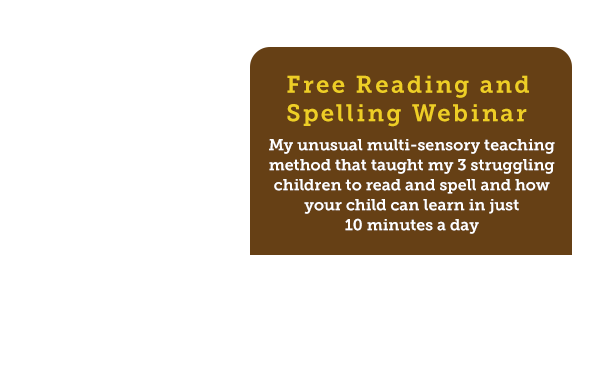The Dyslexia-Stress-Anxiety Connection
Implications for Academic Performance and Social Interactions

What is stress?
Stress is the reaction of the body and brain to situations that put us in harm’s way. The stressor may be a physical threat (e.g., a baseball coming quickly toward you) or a psychological threat (e.g., a worry or fear that you will make a mistake delivering your lines in a play or write a passage that won’t make sense to the reader). Stress, or more specifically, the stress response, is our body’s attempt to keep us safe from harm. It’s a biological and psychological response. When we’re under stress, the chemistry of our body and our brain (and, therefore, our thinking) changes. A part of the brain called the amygdala does a great job learning what’s dangerous, and it makes a connection between certain situations and negative outcomes.
How does good and bad stress work with dyslexia?
Individuals with dyslexia are confronted regularly by tasks that are, either in reality or in their perception, extremely difficult for them. These tasks might be reading, spelling, or math. If they have experienced success at mastering this kind of task in the past, good stress helps them face the challenge with a sense of confidence, based on the belief that “I can do this kind of task.” If, on the other hand, someone has met with repeated failure when attempting this or a similar task in the past, his or her body and brain may be working together to send out a chemical warning system that gets translated as “This is going to be way too difficult for you! Retreat! Retreat!) That’s bad stress in action.
And remember, perception is everything! It doesn’t matter if a teacher, a friend, or a spouse believes that you can do something; it’s that you think you can do it that matters.
What is anxiety?
Anxiety comes in many forms. It can be situational (that is, specific to one kind or class of worry, like traveling or being in social situations). Individuals with dyslexia may experience marked anxiety in situations in which they feel they will make mistakes, be ridiculed, or made to feel foolish in front of others. Severe anxiety or fears are known as phobias.
When the anxiety is specific to or triggered by the demands of being with or interacting with people, and is characterized by a strong fear of being judged by others and of being embarrassed, it is known as social anxiety disorder (or social phobia). This fear can be so intense that it gets in the way of going to work or school or doing everyday activities. Children and adults with social phobia may worry about social events for weeks before they happen. For some people, social phobia is specific to certain situations, while others may feel anxious
in a variety of social situations.
Anxiety can also be generalized (that is, a kind of free-floating sense of worry or impending trouble that doesn’t seem to be specific to one trigger or event). In its more serious form, this is considered a psychiatric disorder known as generalized anxiety disorder (GAD). According to the National Institutes of Mental Health website http://www.nimh.nih.gov/health/topics/generalized-anxiety-disorder-gad/index.shtml:
GAD is diagnosed when a person worries excessively about a variety of everyday problems for at least 6 months. Generalized anxiety disorders affect about 3.1% American adults age 18 years and older (about 18%) in a given year, causing them to be filled with fearfulness and uncertainty. The average age of onset is 31 years old.
How is anxiety different from stress?
Simply put, anxiety is a state of worry about what might be—as compared to stress, which is a reaction to what is. Both stress and anxiety trigger the same chemical reactions in the brain, which does a really good job remembering negative experiences. If you worry all the time about something bad happening to you, that puts you in a state of chronic stress. Individuals with dyslexia worry about reading, writing, and arithmetic much of the time. The irony is, the more they master, the more work they get. It’s an unending cycle.
Individuals with dyslexia may have learned that being in the company of others places them at risk for making public mistakes and the inevitable negative reactions that may ensue. It makes sense, then, that many people with dyslexia have become withdrawn, sought the company of younger people, or become social isolates.
How can individuals with dyslexia move from distress to DE-STRESS?
- Define: Professionals working with the person need to analyze and understand the way dyslexia presents itself in that individual.
- Educate: Based on the information gleaned by the professionals above, the child or adult needs to be taught how dyslexia has an impact on his or her performance in school, workplace, or social situations.
- Speculate: This step involves encouraging individuals with dyslexia to look ahead and anticipate the problems they might encounter because of their condition as they face new challenges.
- Teach: It’s important to teach children, adolescents, and adults developmentally appropriate strategies, techniques, and approaches that will maximize success and minimize frustration and failure. This involves actively teaching people how to recognize and manage stress, the skills of honest self-appraisal, and the ability to learn from and repair errors.
- Reduce the Threat: Educators and others involved need to create learning and social environments that reduce, remove, or neutralize the risk. This means giving students the chance to practice newly learned skills in a safe place. It also involves teaching people with dyslexia how to recognize and deactivate “stress triggers.”
- Exercise: Regular and vigorous physical activity is known to enhance brainpower and reduce stress. So it is important to build in opportunities for exercise. This step also involves encouraging the person to drink plenty of water and eat a healthy diet.
- Success: Children and adults need abundant opportunities to display mastery and experience success. Providing these opportunities gives individuals with dyslexia a chance to learn how to replace the language of self-doubt with the language of success.
- Strategize: The child or adult should be encouraged to use what he or she has learned about minimizing and managing stress, and the relationship between stress and dyslexia, to plan for a future in which continued success is likely.
A little bit of stress is a good thing; it keeps us on our toes and gets us ready for the challenges that are a normal and helpful part of living in a complex world. Yoga, mindfulness activities, meditation, biofeedback, cognitive behavioral therapy (CBT), medication and exercise are among the many ways that individuals (with and without dyslexia) can conquer excessive or debilitating stress. For the individual with dyslexia, effectively managing and controlling stress must also involve learning more about the nature of the specific learning disability. Gaining an understanding of the daily impact of dyslexia and learning how to work through or around the dyslexia to gain a better sense of control over the environment, is the key to reducing stress and achieving greater success
Competence instills confidence and competence leads to success. When children, adolescents, and adults are able to develop a sense of mastery over their environments (school, work, and social interactions), they develop a feeling of being in control of their own destiny. Control through competence is the best way to eradicate stress and anxiety.
Suggested Readings
Brooks, R., & Goldstein, S. (2007).
Understanding and managing children’s classroom behavior: Creating sustainable, resilient classrooms. New York: Wiley.
Minahan, J., & Rappaport, N. (2012). The Behavior code: A practical guide to understanding and teaching the most challenging students. Cambridge: Harvard Education Press.
Ratey, J. (2008).
Spark: The revolutionary new science of exercise and the brain. New York: Little, Brown.
Schultz, J. (2011).
Nowhere to hide: Why kids with ADHD and LD hate school and what we can do about it. San Francisco: Jossey-Bass.
“promoting literacy through research, education and advocacy”™
The International Dyslexia Association · 40 York Road · Fourth Floor · Baltimore · MD · 21204
Tel: 410-296-0232· Fax: 410-321-5069 · E-mail: info@interdys.org · Website: http://www.interdys.org



















